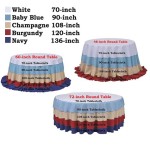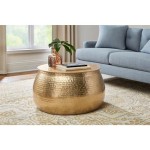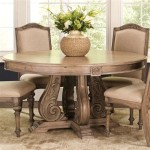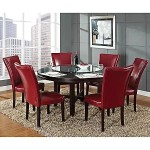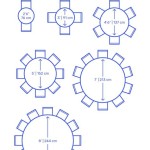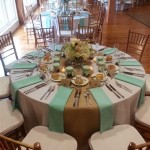How To Build A Round Bar Table Out Of Wood Pallets
Creating a unique and functional piece of furniture using recycled materials offers a satisfying and environmentally conscious approach to home décor. Building a round bar table from wood pallets provides an opportunity to transform discarded items into a stylish and conversation-starting centerpiece. This article details the step-by-step process of constructing such a table, emphasizing safety precautions and offering practical tips for achieving a professional-looking result. The project requires basic woodworking skills, readily available tools, and a keen eye for design.
Before commencing the construction process, it is crucial to gather all necessary materials and tools. This preparatory stage ensures a smooth and efficient workflow. Sourcing suitable wood pallets is paramount. Look for pallets that are structurally sound, free from excessive damage, and preferably heat-treated rather than chemically treated. The “HT” stamp indicates heat treatment. Avoid pallets marked with “MB,” which signifies methyl bromide fumigation, a potentially hazardous process. The quantity of pallets required depends on the desired size and design of the tabletop and base.
In addition to pallets, the project necessitates the following materials: wood screws of various lengths, wood glue, sandpaper (various grits), paint or stain (according to preference), polyurethane or varnish (for sealing), wood filler (optional, for filling gaps), and a lazy Susan bearing (for a rotating tabletop, optional). The necessary tools include: a circular saw (or hand saw), a jigsaw, a drill with various drill bits and screw bits, a sander, a measuring tape, a pencil, safety glasses, work gloves, and a dust mask.
Safety is of utmost importance throughout the entire construction process. Always wear safety glasses to protect the eyes from flying debris. Use work gloves to prevent splinters and cuts. A dust mask is essential when sanding to avoid inhaling wood dust. Operate power tools with caution and adhere to the manufacturer's instructions. Ensure the work area is well-ventilated, especially when using paints, stains, or sealants.
Preparing the Pallets
The initial step involves disassembling the pallets. This process requires careful attention to avoid damaging the wood. Use a hammer and pry bar to gently separate the boards from the frame. If the nails or screws are difficult to remove, a reciprocating saw or multi-tool with a metal-cutting blade can be used to cut them. Exercise caution when using these tools, as metal splinters can be hazardous.
Once the pallets are disassembled, inspect the individual boards for any defects, such as cracks, splits, or knots. Remove any loose nails or staples. Select the best boards for the tabletop and base. The remaining boards can be used for internal supports or other components of the table. It is advisable to overestimate the quantity of boards needed to account for potential waste or imperfections.
Next, clean the boards thoroughly. Use a stiff brush and soapy water to remove any dirt, grime, or debris. Allow the boards to dry completely before proceeding to the next step. This ensures that the wood filler, paint, stain, or sealant adheres properly. For heavily soiled boards, a pressure washer can be used, but be mindful of potential damage to the wood fibers.
After cleaning, the boards need to be properly sanded. Begin with a coarse-grit sandpaper (e.g., 80-grit) to remove any rough edges or splinters. Progress to medium-grit sandpaper (e.g., 120-grit) to smooth the surface further. Finish with fine-grit sandpaper (e.g., 220-grit) to achieve a smooth and polished finish. Sanding with the grain of the wood minimizes the appearance of scratches. A power sander significantly speeds up the sanding process, but hand sanding allows for more control and precision.
Constructing the Tabletop
The tabletop is the focal point of the bar table and requires careful attention to detail. Decide on the desired diameter of the tabletop. For a round bar table, a diameter of 36 to 48 inches is generally suitable. Use a compass or a makeshift compass (a pencil attached to a string anchored at the center) to draw a circle on a large piece of plywood or cardboard. This serves as a template for cutting the pallet boards to the correct length.
Cut the pallet boards to the appropriate length, ensuring that the ends are square. Arrange the boards side-by-side within the circle template. Experiment with different arrangements to achieve the desired aesthetic. Consider alternating the direction of the grain or using boards of varying widths to create visual interest. Once satisfied with the arrangement, secure the boards together using wood glue and screws. Apply wood glue to the edges of each board before joining them. Use clamps to hold the boards together while the glue dries. Drive screws from the underside of the tabletop into each board.
After the glue has dried, sand the entire tabletop to ensure a smooth and even surface. Use wood filler to fill any gaps or imperfections. Allow the wood filler to dry completely before sanding again. Apply multiple coats of paint or stain, allowing each coat to dry thoroughly before applying the next. Follow the manufacturer's instructions for application and drying times. After the paint or stain has dried, apply several coats of polyurethane or varnish to protect the tabletop from moisture and wear and tear. Sand lightly between coats to achieve a smooth finish.
Building the Table Base
The table base provides the structural support for the tabletop. A sturdy and well-designed base is essential for stability. Various base designs can be used, including a cylindrical base, a tripod base, or a square base. This example will focus on a cylindrical base constructed from pallet wood.
Cut the pallet boards to the desired height of the table base. The height should be proportionate to the diameter of the tabletop. A height of 36 to 42 inches is generally suitable for a bar table. Arrange the boards in a circular pattern to form the cylindrical base. Use wood glue and screws to secure the boards together. Reinforce the joints with internal supports made from pallet wood. These supports should be evenly spaced around the circumference of the base.
To ensure stability, add a circular base plate to the bottom of the cylindrical base. This plate can be made from plywood or pallet wood. Attach the plate using wood glue and screws. Alternatively, a metal base plate can be used for added strength. Ensure that the base plate is level to prevent the table from wobbling.
Sand the table base to smooth any rough edges or imperfections. Apply paint or stain to match the tabletop. Apply several coats of polyurethane or varnish to protect the base from moisture and wear and tear. Allow each coat to dry thoroughly before applying the next. Sand lightly between coats to achieve a smooth finish.
Assembling the Bar Table
The final step involves attaching the tabletop to the table base. Carefully center the tabletop on the table base. Use wood screws to secure the tabletop to the base from the underside. Ensure that the screws are long enough to penetrate the tabletop but not so long that they protrude through the surface.
For a rotating tabletop, install a lazy Susan bearing between the tabletop and the table base. Center the lazy Susan bearing on the top of the table base and on the bottom of the tabletop. Use screws to attach the bearing to both the tabletop and the base. Ensure that the bearing is securely fastened to prevent it from slipping or coming loose.
Inspect the finished bar table for any imperfections or areas that require further attention. Touch up any paint or stain as needed. Apply a final coat of polyurethane or varnish to protect the entire table. Allow the table to dry completely before using it. Once dry, the round bar table constructed from wood pallets is ready to be used and enjoyed.

How To Make Pallet Wood Into A Round Circle Shape Fox Hollow Cottage

Bar Stools With Pub Style Table Diy Woodworking

Diy Pallet Bar Tutorial Easy To Make Leap Of Faith Crafting

Table Made From A Pallet

Pallet Bar Height Table Marble Top

High Table Made From Pallets Free Catering Furniture Construction Drawings

Diy Pallet Bar Table

Diy Pallet Table How To Make A Home On Cut Out Keep

How To Build A Diy Pallet Bar

Pallet Table Bar Stools 1001 Pallets
Related Posts

